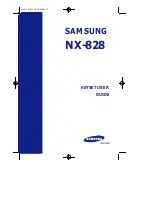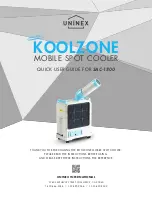
(15189) Precipitation Sensor
Operating Instructions
Operating Instruction
Precipitation Sensors (15189) + (15189 H)
Electrical connections
The sensor will be connected to the cable by leading the cable
through the conduit gland to the connector inside the sensor
housing. Recommended cable type:
2 (4) x AWG 2O CU L sw;
diameter approx. 5.1 mm
The cable should not be longer than 11 m.
When the cable is transferred inside the ground it is
recommended to protect the cable with a protecting
plastic tube.
Use of the bounce-free output signal
(see fi gure page 6)
The usual circuit of the precipitation sensors is suitable for con-
nection to data loggers without an own bounce-free impulse
input. For this application the clamps 3 and 4 are used.
Make sure, that the current supply for the precipitation
sensor with usual circuit is not less than 100
μ
A (see
also technical data).
Use of the direct output signal
(see fi gure page 7)
This circuit variant of the precipitation sensors is suitable
for connection to data loggers with a bounce-free impulse
input. For this application the clamps 1 and 6 are used. In
this case the current supply of the electronics with 100
μ
A is
not necessary.
The LAMBRECHT meteo data logger TROPOS is equipped
with such a bounce-free input. Thus the direct output signal
of the reed contact is used. An additional bene
fi
t is a low-
current effect.
(15189 H) Version with heating
Version i. e. with a controlled 2-circuit heating for collecting
funnel and drain pipe.
Electrical connections
For the connection of the heating a 4-core cable is required,
which has to apply and connect to the power supply unit ac-
cording to the
connecting diagrams
with heating.
The
function of the heating elements
can be tested also at
ambient temperatures above the control temperature of the
solid-state thermostat. For this simple test a regular magnet
has to be held close to the blue housing of the switching cir-
cuit. When reaching a surface temperature of approximately
50 °C the current will be switched off.
Both blue thermostat modules are
fi
tted internally on the funnel
surface as well as on the bottom of the housing.
The operational conditions will be indicated with colored light-
emitting diodes (LED) on the thermostatic module:
green:
supply voltage
red:
heating on
green
red
4


























